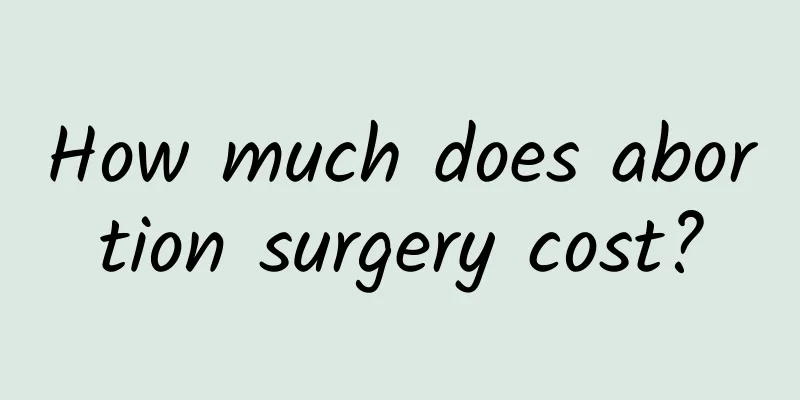Dysfunctional uterine bleeding during menopause

|
Dysfunctional uterine bleeding during menopause refers to the irregular changes in menstrual cycle, menstrual period and menstrual volume caused by endocrine dysfunction in menopausal women. It is referred to as "dysfunctional uterine bleeding during menopause". After women enter menopause, their ovarian function begins to decline, the hormone level of the ovaries decreases, and the feedback function to the hypothalamus and pituitary gland is lost, causing the gonadotropin secreted by the pituitary gland to increase to varying degrees. Although the remaining follicles in the ovaries also develop, they do not ovulate. The endometrial glands show a continuous proliferation reaction under the action of long-term estrogen, and mild hyperplasia, adenocystic hyperplasia or adenomatous hyperplasia may occur. When the estrogen level fluctuates greatly, the endometrium will shed incompletely, and irregular uterine bleeding will occur. The characteristics of menopausal functional uterine bleeding are irregularity and often heavy bleeding. The bleeding can be reduced after using general hemostatic drugs. Some patients develop secondary severe anemia due to repeated bleeding. The treatment of menopausal functional uterine bleeding is different from that of adolescent functional uterine bleeding. Its main purpose is to stop bleeding. However, irregular uterine bleeding may also occur in menopausal women due to other reasons, such as uterine fibroids, endometrial cancer, endometrial polyps, etc. In order to exclude organic lesions of the uterus and make a clear diagnosis, a comprehensive curettage in sections must be performed. The purpose of hemostasis is achieved at the same time as the curettage. After excluding organic lesions, in addition to ordinary hemostatic drugs, progestogens are often used to stop bleeding, such as progesterone acetate, norethindrone, and megestrol acetate. After the bleeding stops, the dosage is reduced every 3-4 days, and each reduction does not exceed one-third of the original dosage to prevent breakthrough bleeding. In order to control the menstrual cycle and enable patients to smoothly transition to menopause, progestogen and androgen combined therapy is generally used. Menopausal functional uterine bleeding is also classified as "metrorrhagia" in traditional Chinese medicine. The causes and treatment principles are basically the same as those of adolescent functional uterine bleeding. However, due to the gradual decline of kidney qi, organ dysfunction, and spleen weakness in menopausal women, they often have no power to control blood and suffer from metrorrhagia. Therefore, menopausal functional uterine bleeding is more common with spleen failure to control blood. Symptoms include sudden metrorrhagia or continuous bleeding, pale color and thin blood, fatigue and shortness of breath, pale complexion, swollen eyelids, pale and fat tongue, and weak pulse. Treatment should be to invigorate qi and strengthen the spleen, and consolidate Chong and Ren meridians. |
>>: How to provide care and health care for patients with functional uterine bleeding?
Recommend
Does adenomyosis cause endometrial thickening?
Endometrial hyperplasia is the proliferation of e...
Wrong weight loss leads to calcium deficiency ~ bone loss is like a speeding car
It's the end of the year and time for spring ...
What are the symptoms of women suffering from vulvar leukoplakia?
Vulvar leukoplakia is also known as vulvar white ...
Massage for amenorrhea
Women who are 18 years old or older and do not hav...
High-risk groups for ectopic pregnancy: 6 types of women need special attention, and the last one must be seen by your husband!
Ectopic pregnancy, this scary-sounding medical te...
Common symptoms of vulvar leukoplakia
People need to know the obvious manifestations of...
What to eat to prevent uterine effusion
Uterine effusion is a common gynecological diseas...
What should women eat after miscarriage?
After a miscarriage, women must want to know what...
What to do if the endometrium is thick and menstruation does not come
What should I do if my endometrium is thick and I...
What should I do if my menstrual flow is light?
What should I do if my menstrual flow is light? O...
What does uterine fibroid nodule mean? Are uterine fibroid nodules serious?
What does uterine fibroid nodule mean? Uterine fi...
Where to treat vulvar itching
Vulvar pruritus is a gynecological disease that f...
Whole grains + fruits and vegetables = liver detoxification? It turned out to be wrong...
The liver is an important organ in the human body...
Can I eat chocolate after a miscarriage? Don’t eat too much
For women who desperately want to have children, ...
How to check for premature ovarian failure
Premature ovarian failure refers to a disease in ...









